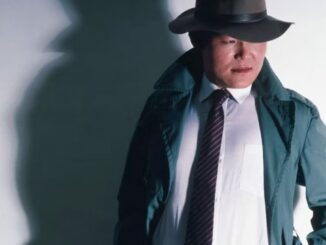
We originally reviewed the documentary Kim’s Video in our coverage of last year’s Sundance Film Festival. We represnt that review now ahead of it going into .
For those in the know, Kim’S video was legendary. A small, indie video rental store in New York City, the shop was well known far outside the confines of its Greenwich Village neighborhood for its wide and eclectic film selection that focused on American independent cinema and genre films from around the world. Once cinephile’s trash was another cinephile’s treasure at Kim’s and all movies were treated with the same respect. When Quentin Tarantino had his ill-fated Broadway debut in the 1998 production of Wait Until Dark, he would spend his days off from the show prowling the aisles at Kim’s Video for Shaw Brother martial arts films for inspiration for his upcoming Kill Bill.
Kim’s Videos opened on Avenue A in the East Village in 1987, a spinoff of a small video rental shelf in owner Yongman Kim’s dry cleaning business. The store quickly grew a reputation for being a place for film fans to find the hard to find. Many titles on the shelves were of questionable, grey market origins. (Translation – bootlegs.) The counter help ran from enthusiastic film fan to snobbish film fan, but somehow even the most churlish register jockey there only added to the place’s charm. When the FBI raided the store and confiscated many tapes of dubious legality, the titles mysteriously reappeared on the shelf just days later. When the store finally closed its doors in 2008, it had its entire inventory sent to Salemi, Sicily, a small town who hoped to turn the collection into a tourist attraction, only to have the collection disappear from public view.
There is an interesting film to found in the story of Kim’s Video, but this self-titled documentary from directors Ashley Sabin and David Redmon is not it. The fate of the Kim’s Video collection is an interesting part of the story, it outweighs the overall story of the establishment. The history of the retail stores are quickly glossed over ion the first ten to fifteen minutes in favor of Redmon running around Salemi, irritating the locals and breaking into the place he feels that the collection is being stored. The story of Kim’s Video was much deeper than the shallow treatment it gets here, with avenues about video store culture, cinephilia and how film sometimes had to be consumed that remain untraveled.
Redmon serves as our on-screen guide in the telling of the store’s history and investigation into what happened to the store’s video holdings. While not a new idea – see all the documentaries in Michael Moore’s filmography – Redmon doesn’t work well as the film’s interlocutor. Rather than serve as a guide, he seems to be more enamored with being on camera and will often interject himself into the proceedings as if the film were about him and not the titular video store. And as we get further into the films short, eighty-eight minute runtime, more of Redmon is definitely less.


